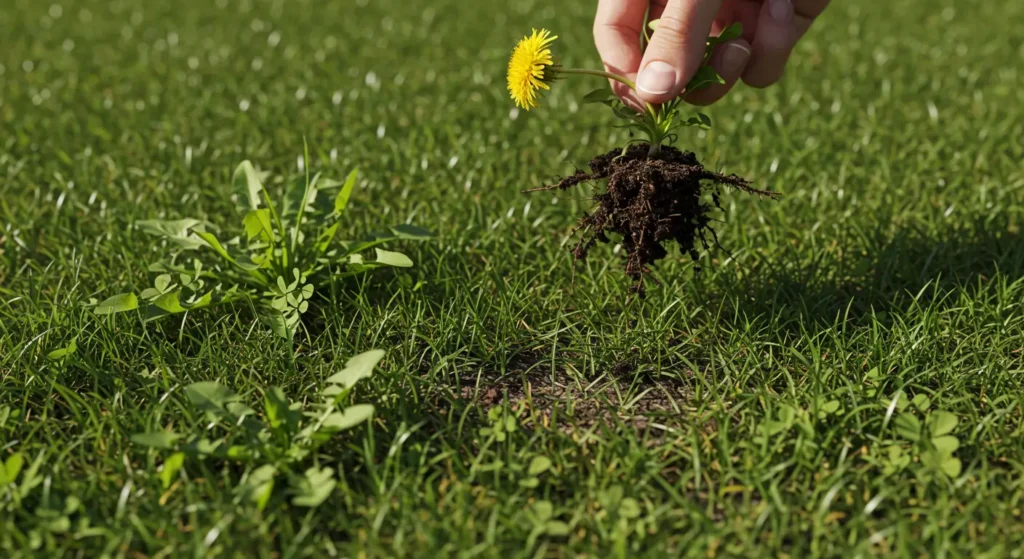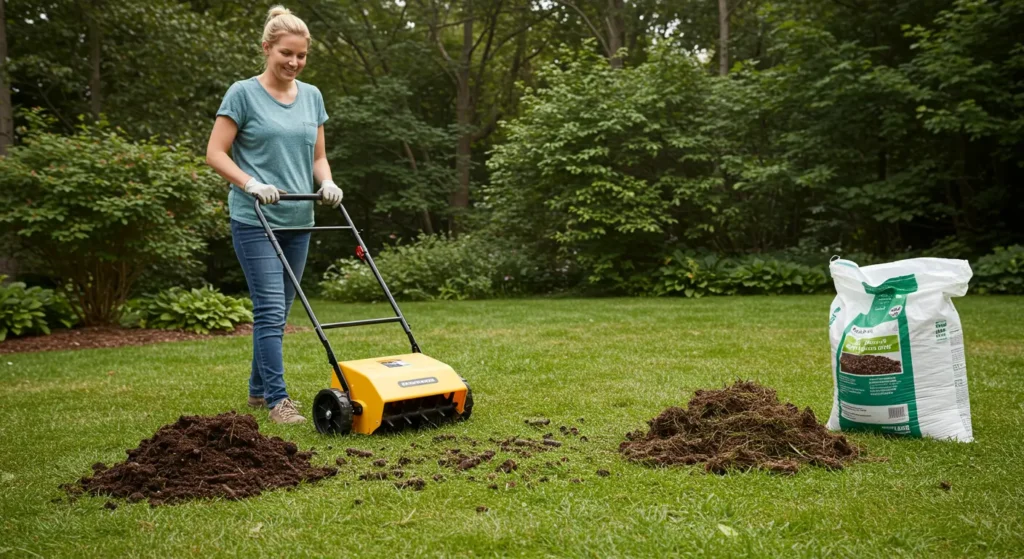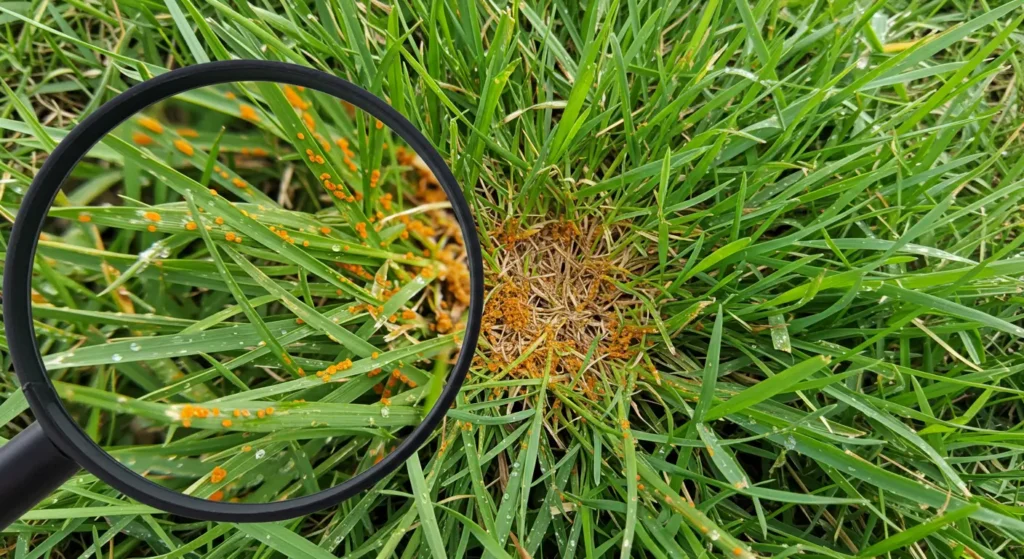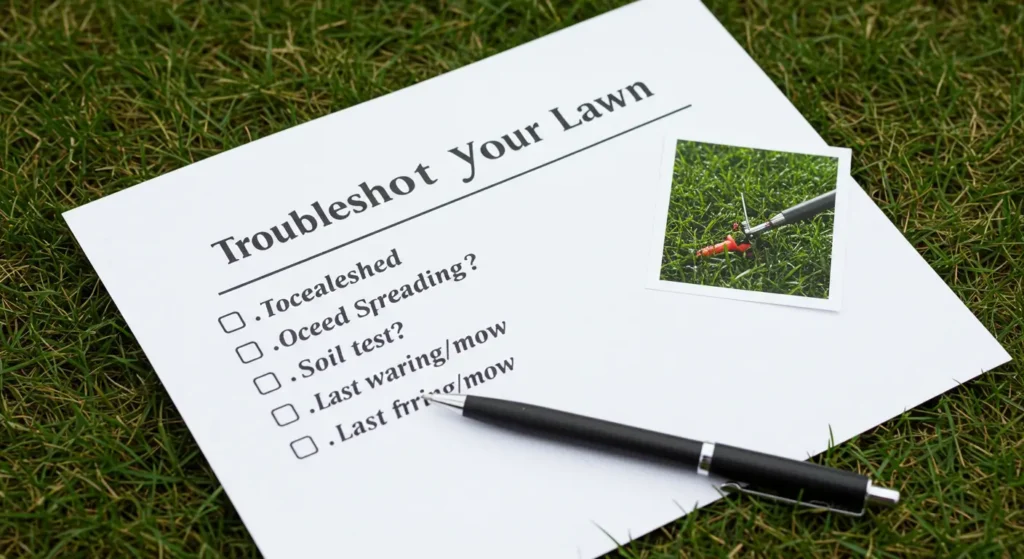The first time I tried to impress a neighbor, I watered my lawn until it looked like a small swamp, and woke up to a patchwork of brown circles the next week. Sound familiar? Whether you’re in Nairobi, New York, London or Sydney, almost every homeowner with a lawn has stared at a stubborn problem and wondered, where did it all go wrong?
This guide walks through the most common lawn problems and solutions .Think of it as the troubleshooting map your lawn secretly wants.
1. Brown patches (dead or thinning grass)

Why it happens: Underwatering, fungal disease, pet urine, compacted soil or heat stress.
How to fix it:
- Diagnose: Scrape a small patch, healthy roots pull up easily; fungal mats or slimy patches suggest disease.
- Short-term: Rake dead grass, re-seed with the right grass type for your climate and top-dress with a thin layer of quality topsoil.
- Long-term: Improve watering routine (deep, infrequent watering early morning), aerate compacted soil and rotate pet areas or dilute urine spots with water immediately.
Tool & product tip: Use a core aerator once a year and a seed mix matched to your region (cool-season vs warm-season grass).
2. Weeds taking over

Why it happens: Bare spots, wrong mowing height, compacted soil, and poor fertility invite dandelions, crabgrass, clover and other invaders.
How to fix it:
- Prevention: Keep turf dense — mow at the recommended height for your grass species and feed with a balanced fertilizer in season.
- Spot control: Pull broadleaf weeds by hand after rain for easy removal or use targeted post-emergent herbicides on stubborn patches.
- Lawn-building: Overseed thin areas in the dormant-to-active transition period for your grass (spring for warm-season, fall for cool-season).
Pro tip: A healthy, shaded lawn can still fight weeds — address the root cause (light, soil, moisture), not just the weeds.
3. Thatch and compacted soil

Why it happens: Over-accumulation of dead grass and roots (thatch) or heavy foot traffic leads to compacted soil that repels water and stunts roots.
How to fix it:
- Dethatch if layer >1/2 inch (use a dethatching rake or machine).
- Core aerate to relieve compaction — ideal in growing season for your grass type.
- After aeration, overseed and top-dress to encourage healthy root growth.
When to call a pro: Large lawns or heavily compacted sites may need mechanical aeration services.
4. Poor drainage / puddles

Why it happens: Clay soils, poor grading, blocked drains, or compaction.
How to fix it:
- Short fixes: Install a French drain or add organic matter to improve soil structure.
- Rethink grading for persistent problems slope away from foundations and toward drainage.
- Use sand or gypsum cautiously to improve clay soils; always test soil first.
Seasonal note: Avoid heavy activity on waterlogged lawns — wait until the soil is dry enough to avoid further compaction.
5. Pests and insects (grubs, armyworms, etc.)

Why it happens: Pests feed on grass roots or blades, often during warm months.
How to fix it:
- Inspect: Brown patches that lift like carpet often mean grubs. Small chewing on blades might be caterpillars.
- Natural controls: Encourage predators (birds), introduce nematodes for grubs, or use Bacillus thuringiensis (BT) for caterpillars.
- Chemical options: Use insecticides as a last resort and follow label instructions precisely.
Sustainability tip: Integrated pest management (IPM) — monitor, set thresholds, use biological controls first.
6. Fungal diseases (mildew, rust, brown patch)

Why it happens: Overwatering, poor air circulation, mowing low, and prolonged leaf wetness.
How to fix it:
- Cultural controls: Water in the morning, improve air flow (trim nearby shrubs), raise mowing height.
- Fungicides: Use targeted fungicides for severe outbreaks; timing matters — treat early.
- Resist panic: Many fungal issues are seasonal and manageable with cultural changes.
Prevention: Proper fertilization schedule to avoid weak, disease-prone turf.
7. Uneven color / patchy growth

Why it happens: Nutrient deficiency, uneven watering, or soil variability.
How to fix it:
- Soil test to check pH and nutrient levels.
- Apply a tailored fertilizer program and adjust lime or sulfur to correct pH.
- Use spot-watering or irrigation upgrades (drip or smart controllers) to even out moisture.
8. Mower stripe/scar problems and scalping

Why it happens: Dull blades, incorrect deck height, or mowing when grass is too long/short.
How to fix it:
- Keep blades sharp and mow at recommended heights.
- Don’t remove more than 1/3 of blade length in a single mow.
- Alternate mowing pattern to avoid ruts and soil compaction.
Seasonal care calendar (global, simplified)
- Spring (cool areas) / Early season (warm areas): Aerate, reseed, apply starter fertilizer.
- Summer: Water deeply early, monitor for heat stress and pests.
- Fall (cool areas) / Late season (warm areas): Overseed, lower mowing height gradually, apply balanced fertilizer if appropriate.
- Winter: Keep foot traffic low; clear debris to prevent disease.
Quick troubleshooting checklist

- Is the problem localized or spreading? (localized → pests/pet damage; spreading → disease, irrigation).
- When did it start relative to season, weather, or a new activity (construction, dogs)?
- Soil test results? (get one before major fertilizer or lime applications).
- Last irrigation, mowing, and fertilization dates?
When to call a professional
- Large infestations of grubs or disease across the lawn.
- Complicated drainage or grading work near structures.
- You want a long-term plan (lawn renovation, irrigation installation).
Your lawn may never be perfect but it can be honest. Treat symptoms quickly, fix the environment and the lawn will reward you. A small habit change (watering at 6AM, sharpening blades once a season, aerating annually) beats expensive “miracle” products every time.







